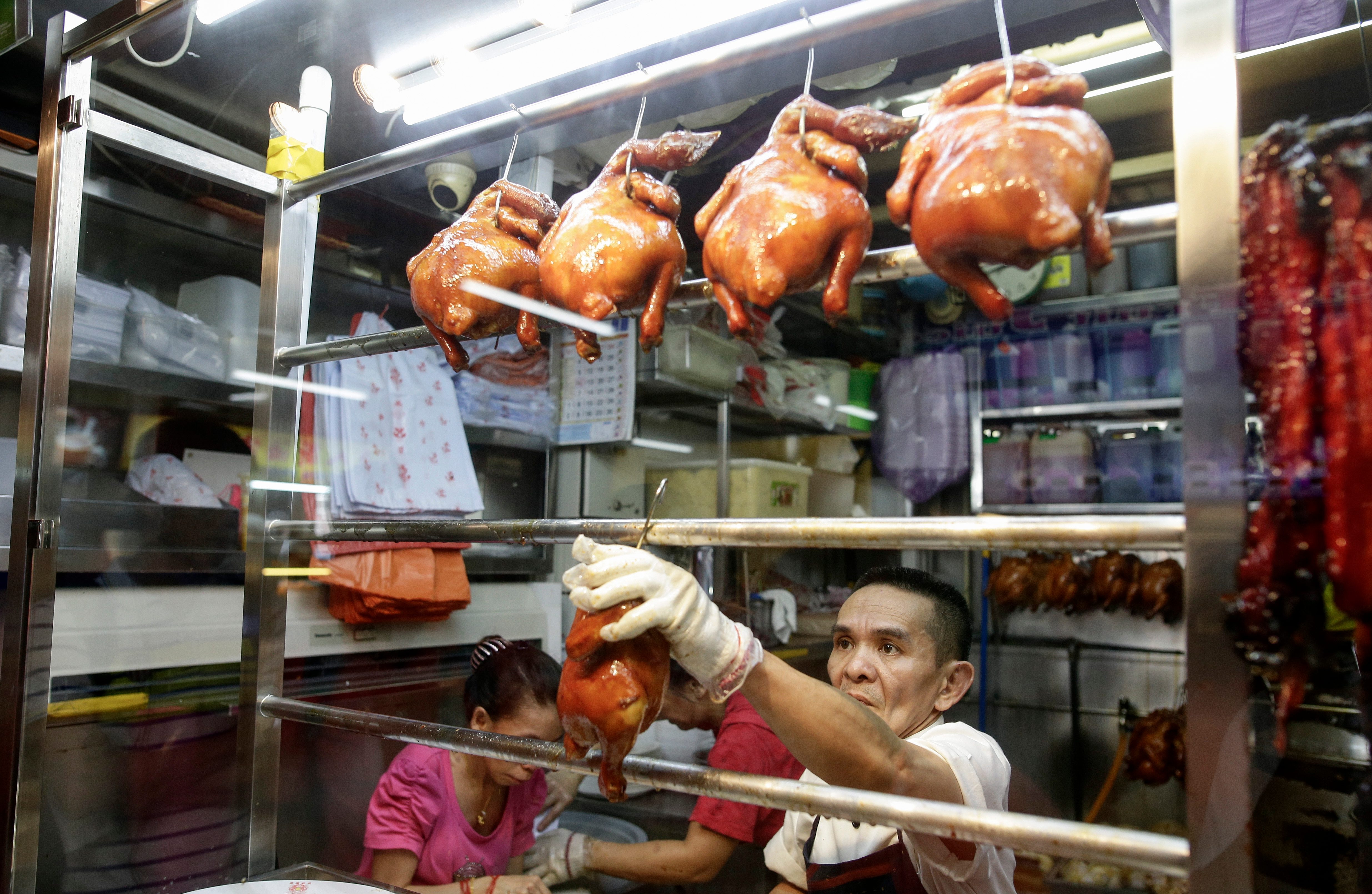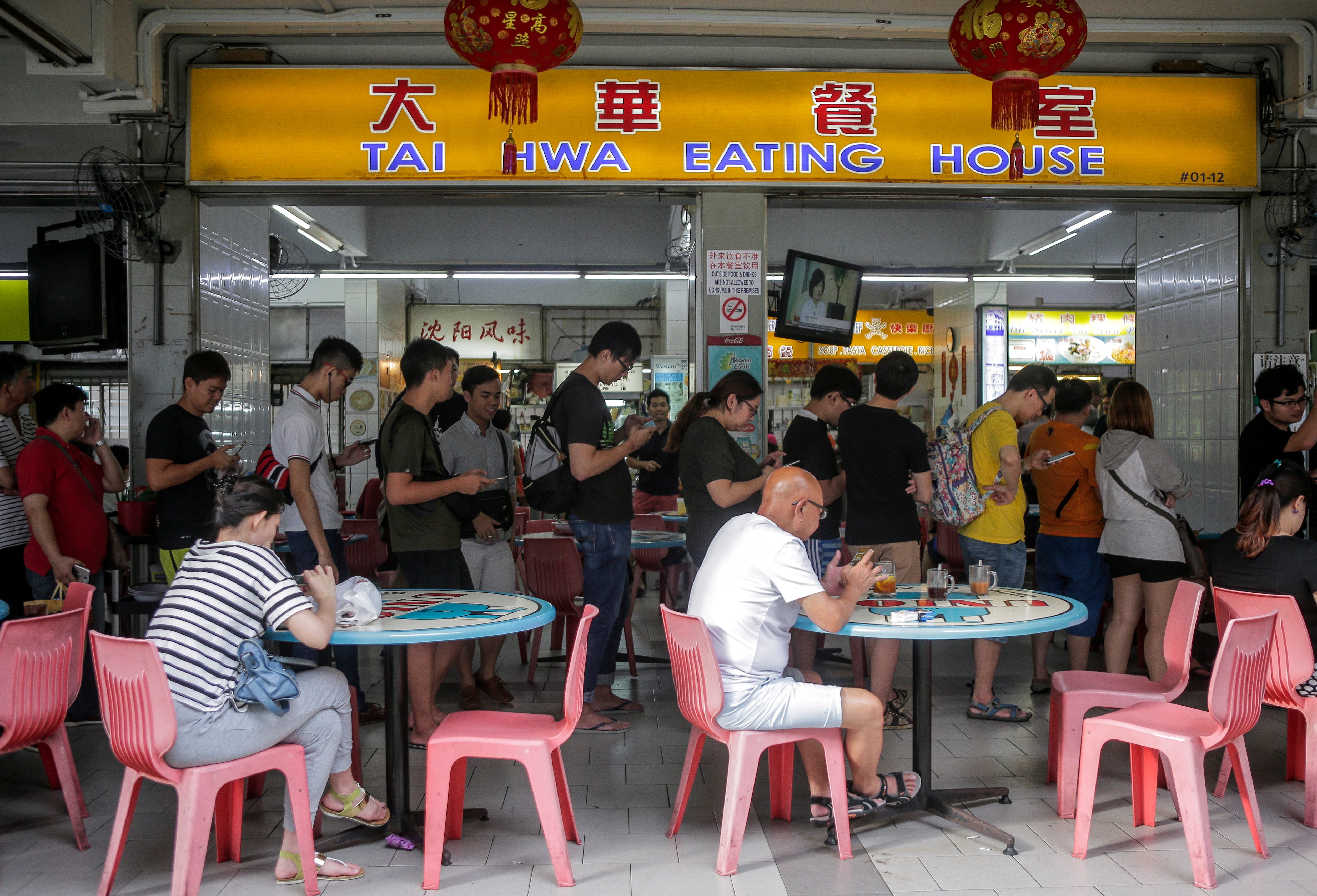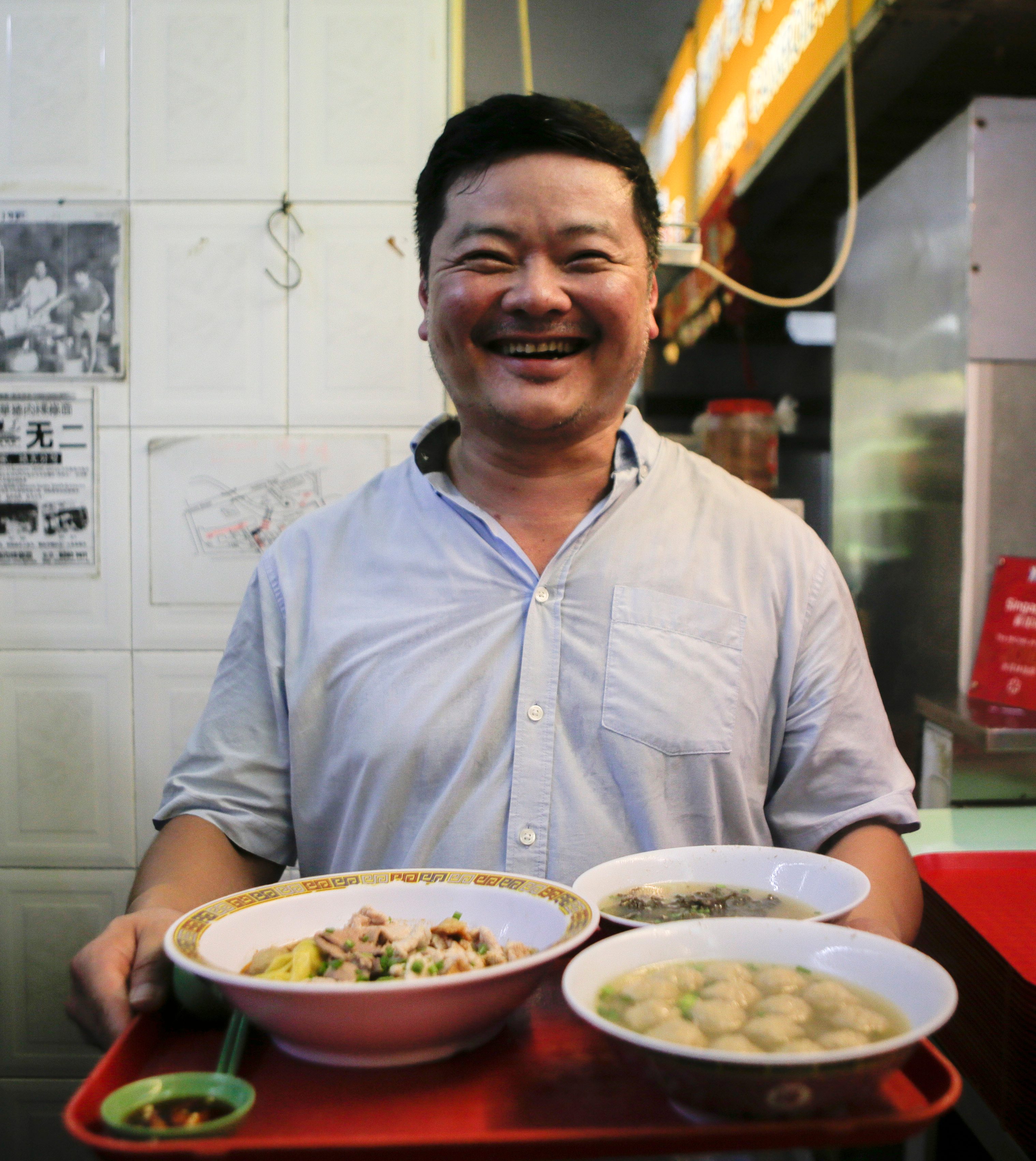SUMMARY
This is AI generated summarization, which may have errors. For context, always refer to the full article.
![[WATCH] In demand: Singapore’s Michelin-starred street food](https://www.rappler.com/tachyon/r3-assets/C44F61E6D510440A8FA38F047C40FFB3/img/1E0EA82C8A2F49498AC64C265FAEE2B4/20160723-Hong_Kong_Soya_Sauce_Chicken_Rice_and_Noodle-001-scaled.jpg)
SINGAPORE – A queue 100-people long snakes out from a tiny food stall in Singapore’s Chinatown, each customer impatiently waiting their turn for a taste of Chan Hon Meng’s prized soya sauce-braised chicken. (READ: Michelin guide recognizes Singapore hawkers)
He has always had loyal customers but in the days since he was awarded a Michelin star, waves of new gourmands have descended on his stall in such numbers that he’s struggling to keep up with demand.
Chan is one of two “hawkers” – so-called because many started out as street peddlers – awarded one star by the culinary bible when it launched its inaugural Singapore guide in late July.
Only one restaurant, French chef Joel Robuchon’s eponymous outlet, secured the coveted 3-star rating.
“I’d heard of the Michelin guide but I thought they only gave those out to restaurants,” Chan told Agence France-Presse while chopping up chicken, which is served over rice or thin yellow noodles topped with his now famous dark soya sauce.
A plate costs just Sg$2.50 ($1.85), making it one of the cheapest Michelin-starred dishes in the world.
“The fact I have this star shows that simple food like ours is worthy of a global award too,” said Malaysian-born Chan.

His place, Hong Kong Soya Sauce Chicken Rice & Noodle, offers exactly what it says in the name. Like most hawker stalls, the focus is on delivering signature dishes that customers return for.
Chan says he now sells 180 chickens per day, 30 more than his pre-Michelin star average.
“Any more than that and I cannot cope, and I don’t want to give people food that is not up to standard,” the 51-year-old added.
He works 17-hour days in his miniscule kitchen, where lines of his whole braised birds hang on display.
The stall is housed in a food center packed with an array of vendors selling everything from chili crab to pork intestine.
Aging wall fans provide the only respite from Singapore’s humidity and the heat from the kitchens, but the queue for Chan’s chicken grows nonetheless.
Singapore’s ‘soul food’

Across town in an unassuming food court is Tang Chay Seng’s stall, Hill Street Tai Hwa Pork Noodle. Since Michelin awarded them one star, hundreds are turning up daily for a bowl of minced-meat and noodles.
Customers now face a wait of up to two hours for a Sg$5.00 serving – it was around 30 minutes before.
Tang’s father came to Singapore from China’s Guangdong province, where their specialty “Teochew” noodle dish originates. Initially he worked as a butcher’s assistant before selling pork noodles in a coffee shop at Hill Street, where his three sons helped out.
“Learning a skill is not easy. We worked very hard all the time and I had no childhood,” Tang told AFP. He took over running the stall in the 1960s, after his father fell ill.
“The importance lies in the noodles. Everything else, there’s a recipe you can follow but for the noodles, it has to be cooked just right, which you can only learn from practice,” he explained.

Leslie Tay, a doctor who runs a popular blog called ieatishootipost, described hawker fare as the “soul food” of the nation.
Street food vendors started out in the early 20th century catering to immigrants who came in search of work in what was then a British colony, providing cheap fare that reminded settlers of home.
After Singapore gained independence from Malaysia in 1965, hawkers were regulated for hygiene reasons: many were itinerant, had no access to running water and emptied their waste directly into open drains.
“So these street food vendors were relocated to hawker centers, which were basic sheltered areas with stalls that hawkers could sell food, had proper sanitation, and an area for people to eat,” Tay added.
Tradition under threat

Chan came nearly 3 decades ago from the Malaysian mining town of Ipoh where he learned how to make soya sauce-braised chicken from a Cantonese chef.
But like many traditional hawkers, he is finding it hard to find good help despite brisk sales.
“It’s not that I don’t trust anyone, but I have difficulty hiring people to work in a stall like this,” he said.
Long hours and low wages mean few want to take on the work and Singapore has placed restrictions on using foreign labor.
Tang has spent decades building his reputation. Long regarded as a favorite with Singapore’s food lovers, it has featured in travel guides and culinary blogs.

But he is resigned to the fact the next generation may not have what it takes to make hawker stalls a success.
In 2010 Tang took legal action – and won – against a nephew who had set up a rival outlet with a similar name, accusing him of trying to capitalize on Hill Street’s popularity without putting in all the work.
He added: “My son tried to open a stall but he couldn’t stand for long because he has leg problems. I have feet problems too, from standing more than 18 hours a day.”
The 70-year-old added: “It’s hard work, but this is all I know.” – Elizabeth Law, AFP/Rappler.com
Add a comment
How does this make you feel?
There are no comments yet. Add your comment to start the conversation.